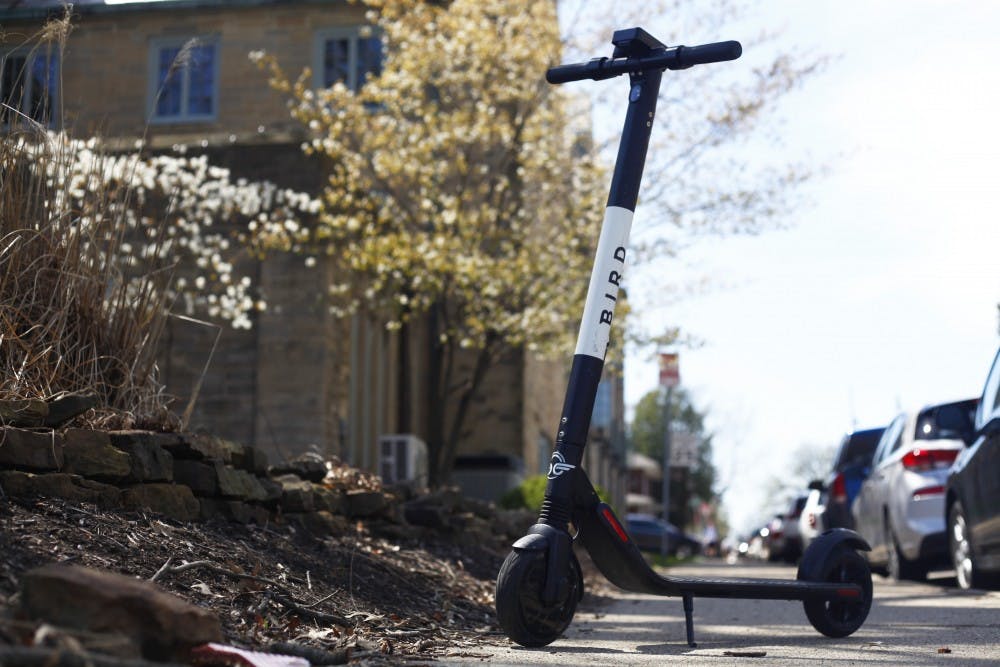There are few things more unexpectedly painful than having someone riding an e-scooter clip you in the stomach as they go zooming past with a barely audible “sorry” hanging in the air. These e-scooters, though their riders often less so, are essential in the fight against climate change, and it is crucial for lawmakers to understand that.
Bloomington has been intensely debating the role of and regulations on e-scooters ever since they arrived in September 2018. The issue of regulating the e-scooters at its core is that they exploded in popularity before anyone could write effective regulations for them.
In 2018, Lime and Bird, two major e-scooter companies, crossed the 10 million ride mark each and dubbed 2018 the ‘year of the scooter.’ It was also the year when e-scooter companies were essentially kicked out of cities such as Beverly Hills and Boston. Riders love them, regulators hate them.
In all this talk, however, the mission in which these e-scooters were launched is often missed: to make cities greener and more livable. One might wonder how e-scooters littering the sidewalk make the city more livable, and the answer lies in the last mile problem.
The last mile refers to the section of a journey that usually needs to be made on foot after taking some sort of transit. For example, if you want to go to dinner on Fourth Street, you could take a bus to Dunn's Woods and walk, or you could drive and park somewhere closer. The last mile is much shorter if you drive as opposed to if you take the bus.
Here lies the problem. Cars are terrible for the environment, but they tend to be convenient. According to a Duke University study, if a 70-passenger bus is taken by 11 or more people, the amount of emissions generated per person are less than those created by someone driving themselves. But individuals are likely to have to walk a little bit after getting off the bus.
E-scooters have the potential to change this dynamic. Their promise lies in the fact that individuals can take these to catch a bus as well as after getting off one. The Natural Resources Defense Council, an environmental advocacy group, at least believes in this promise as it requests city governments to remember the potential of e-scooters in combating climate change.
It is not a guarantee that e-scooters will help complement public transit in Bloomington. In Portland, Oregon, they boosted the use of other public transit whereas in Austin, Texas, they have put the squeeze on a bike-based rental company.
This is why it is so important that the City Council not dampen e-scooters’ futures.
However, this is not to say that no regulation is needed. At a recent City Council meeting, Kaleb Crain, a Bloomington resident who requires an electric wheelchair, shared his frustrations with scooters as they block his path, sometimes dangerously so.
IU policy dictates that “Scooters may never be parked in pedestrian pathways, vehicle parking spaces, ADA ramps, stairwells, inside buildings, or locked to signs, light poles, fences, benches, handrails or other fixtures.” Many a scooter has been impounded for violating this policy.
Bloomington’s policy is that scooters should be parked in a bike rack and not block the right-of-way for anyone. It often goes unenforced, and the city should crowdsource it to be more effective. The city should make it so that if you record yourself putting a scooter back in the right spot, you get a reward. Even a minor reward could be incentive enough.
E-scooters are no panacea for the fight against climate change. However, they may just help soften the blow a little, and it is worth having them around long enough to find out.






